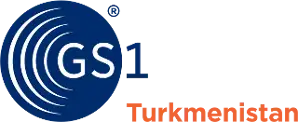Our history tracks the rapid evolution of modern global commerce
It all started on a beach in Florida when Norman Joseph Woodland drew the world’s first barcode in the sand. And this first barcode changed everything. From the first barcode on a gum wrapper to the advanced identification standards that streamline retail, foodservice, healthcare and online marketplaces today.
It’s a story that’s testimony to the remarkable innovations that can happen when industry leaders work together. Thanks to new technologies and applications, the impact of GS1 standards will continue to be felt in diverse ways and sectors.
1973 - INDUSTRY LEADERS UNITE
- Industry leaders in the United States select a single standard for product identification – the Universal Product Code (UPC) symbol – over seven other options. Still in use today, the UPC was the first “GS1 barcode”.
1974 - THE FIRST LIVE BARCODE SCAN IN THE US
- The Uniform Code Council (UCC) is established in the US as a not-for-profit standards organization
- 26 June, 8.01am: A pack of Wrigley’s gum becomes the first product to be scanned with a UPC barcode in a Marsh supermarket in Ohio, United States
1976 - THE 13TH DIGIT
- Based on the original UPC barcode, a 13th digit is added, allowing the identification system to go global
1977 - A EUROPEAN ORGANISATION
- The European Article Numbering (EAN) Association is established as an international not-for-profit standards organisation. With its office in Brussels, the EAN Association has 12 founding Member Organisations from European countries. Together, they launch the EAN identification system to improve supply chain efficiency in the retail sector
1980 - IDENTIFYING LOCATIONS
- Location numbering standards – now the GLN (Global Location Number) – are introduced
1983 - BARCODES ON CASES
- In the UK P&G and Nabisco are the first companies to benefit from the new ITF-14 barcode for outer cases, extending scanning to the logistics process and leading to better inventory management
1984 - INTERNATIONAL EXPANSION
- The European Article Numbering Association becomes EAN International as associations in Japan, Australia, New Zealand and South Africa join
1989 - EXPANSION OF STANDARDS
- Barcode standards expand again to include logistics units with UCC/EAN-128 barcodes. These barcodes include Application Identifiers, which allow additional information about the product to be included in a barcode for the first time, such as expiry dates, batch and lot numbers and quantities
1990 - A GLOBAL ORGANISATION
- UCC and EAN International sign a cooperative agreement formalising their intent to co-manage global standards. This creates a unified presence in 45 countries
- EANCOM, the first global Electronic Data Interchange (EDI) standard is published, enabling companies to standardise business transactions across borders
1992 - IDENTIFYING LOGISTICS UNITS
- A standard format for logistics labels is introduced, using the Serial Shipping Container Unit (SSCC) identifier, enabling logistics units to be tracked throughout the supply chain
1995 - INTERNATIONAL COLLABORATION IN HEALTHCARE
- EAN.UCC standards extend into the healthcare sector for the first time with the healthcare collaboration project
1999 - RFID INNOVATION
- The Auto-ID Center at the Massachusetts Institute of Technology is launched, leading to the standardisation of RFID tags to carry Electronic Product Codes (EPC), a universal identifier that provides a unique identity for every instance of every item
2000 - STILL GROWING
- At the start of the new millennium, EAN.UCC has a presence in 90 countries.
2001 - INTRODUCING XML
- A new EDI standard for business message standards using XML is published
2002 - A GLOBAL STANDARDS PROCESS
- Launch of the Global Standards Management Process (GSMP), providing a global forum for organizations to discuss and establish new standards for their businesses
2003 - EPCGLOBAL AND DATAMATRIX
- EPCglobal is formed to initiate the development and worldwide adoption of the Electronic Product Code (EPC) and RFID
- DataMatrix, a two-dimensional symbol is approved as part of the EAN.UCC system, enabling far greater information to be encoded in a smaller symbol
2004 - GDSN AND RFID
- Launch of the Global Data Synchronisation Network (GDSN) – a global, internet-based initiative that enables trading partners to efficiently exchange product master data
- The first standard RFID (Radio Frequency Identification) standard is published – EPC Gen2 defines the physical and logical requirements for UHF RFID tags and readers
2005 - GS1: A NEW NAME FOR A TRULY GLOBAL ORGANISATION
- EAN International becomes GS1 – the new name for this now truly global organization
2007 - REACHING OUT TO CONSUMERS
- GS1 enters the world of business-to-consumer (B2C) solutions, aiming to provide a better consumer experience by linking accurate and trusted product information through mobile devices
2011 - QR CODE
- GS1 expands its offerings with the approval of the GS1 QR (Quick Response) Code – a two-dimensional barcode with fast readability and greater storage capacity
